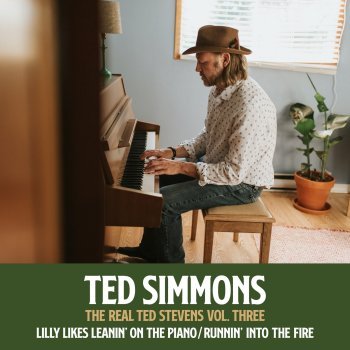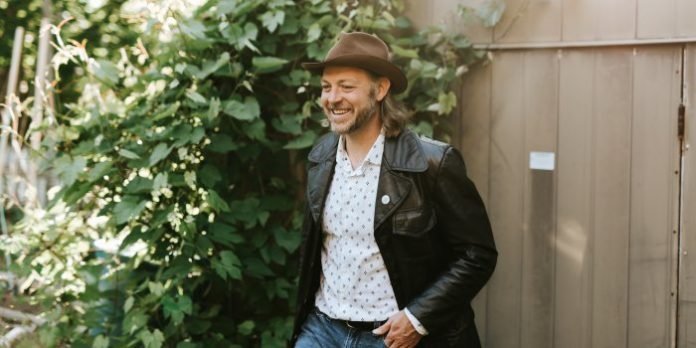Having travelled to and lived in many other parts of the world, Dartmouth-based singer-songwriter Ted Simmons looked beyond where he was from and saw something bigger at a very early age. However, the one constant in his life has been music.
With the third and final installment in his A/B series The Real Ted Stevens now complete, we find out more from the artist.
This interview has been edited.
Q. Tell us about The Real Ted Stevens.
Well, first, the name comes from an inside joke. My friend introduced me once at a performance as Ted Stevens instead of Ted Simmons, and then it took on a life of its own where Ted Stevens became my alter ego. So if I did something out of character, that was a Ted Stevens, kind of thing.
Q. You’ve released the songs in three volumes. Why three volumes?
The three volumes thing was a strategy I cooked up based on a couple of ideas.
First, it is popular today to release singles; the distribution system is conducive to that method. In the old days, the thinking was similar, except the technology was different, so you had an A and a B side, so I thought to combine the two.
The three volumes were because, in my experience of releasing albums, you put a bunch of work into it and then after you release it, there is a space. If there was something you wanted to do differently to promote it, or just so happened it didn’t catch on, you have to wait for another album. Being an independent artist, it’s not that easy to push out another album. So, I decided to release a series of singles and do lessons learned after each one to see what I could do differently/better for the next one. Three just seemed like a good number.
Q. How did you choose the songs for each volume? Is there a progression to the music? Are the songs meant to be listened to in order?
They don’t necessarily have to be in order, but there is a point to the pairings.
Vol. One, the A-side is a song I have wanted to record for a long time, so I did that one first, and then the B side is me singing and playing the piano, which I always wanted a released recording of me doing that.
Vol. Two, those are both rocking blues, so they pair easily.
In Vol. Three, I use a different rhythm section for both, and the songs are complex narratives, so they pair together.
Vol. One and Two, it’s Chris Brown on drums and Mark Merriman on bass, Vol. Three is Jordi Comstock on drums and Nick Maclean on bass.
Q. Will the three volumes form the basis for a full album? Or are they meant to be standalone projects?
Yes, they are the basis for a full album. I am currently recording the rest of the songs to finish the album, and it will be released in the spring.
Q. Tell us about your latest single, Lilly Likes Leanin’ On The Piano. Where did you find inspiration for this particular song?

That is a funny story. Next to my piano, there is a lily plant, so the main progression that goes through the song I had for about a week, then one night I looked over and just said, “Lilly likes leanin’ on the piano,” and it fit. So then I wrote a few more lines of the first verse, got the line “she whispers to me and the boys play something blue” from a friend of mine, and then the narrative sort of wrote itself after that.
Q. It appears it has been a few years since your last album, Lucky’s Blues, in 2017. Why the break, and what brought you back?
Well, it wasn’t from my lack of trying. The main thing was it took me a while to come up with a concept, and then I had written a bunch of songs and made a demo for a whole album, but it didn’t feel right, so I went back to the drawing board. I wrote some new songs, and then the concept came together, but then I had some health problems which sidelined me a bit, then there was the pandemic. However, that presented an opportunity. I had time to demo all my new tracks, and it felt right. Going to the studio was one of the things you could do during that time. Everyone involved had time to work on it, so it just came together.
Q. Where did your interest in music come from? Did you grow up in a musical family?
I have always loved music from my earliest memories. No one else in my immediate family plays music, but my cousins are artistic or musical on my dad’s side. My grandfather on my dad’s side was an artist. He made furniture, musical instruments and played violin and played the organ in his church group. He had no formal training; it was all by ear.
Q. When did you know you wanted to become a musician?
It seems I had the idea of being a person that sings and plays guitar in front of an audience my whole life. I can’t remember not thinking that. I was a very shy kid, so I didn’t know how to reconcile the two things, but it took me a while before playing in front of people.
Q. Who are your biggest influences?
My biggest influences would be Bob Dylan, Tom Petty, Bruce Springsteen, The Rolling Stones, Muddy Waters and The Band.
Q. You say you were captivated by blues music at a very young age. What was it about the genre that you found so compelling?
You know that is an interesting question. I remember feeling it was like a bolt of electricity with the bending sound of the guitar, the desperation in the lyrics, the singing and the pure joy in it. I had never heard anything like that. It seemed so far away from where I lived but seemed to reflect how I was feeling about the things going on around me.
Q. Your bio says you lived for a year in a village in Sweden. What brought you there and back. Did your time there influence your music?
I got an internship with the Canadian Department of Foreign Affairs after university, and that was where they sent me. It influenced my music because I had a lot of time to work on it as I lived a somewhat Spartan-like existence there. I also came back with many interesting stories from the people I met and the different culture. One thing that stands out was one night a car full of girls gave me a ride somewhere, and they were all singing “Summer Of 69”, like belting it out, and I thought, wow, that song really has some universal appeal.
Q. You’re originally from Newfoundland but now living in Nova Scotia. What brought you to Dartmouth?
It is a bit of a long story. I came to Nova Scotia about twenty years ago to go to school, and I stayed. I eventually ended up in PEI but came back because my son’s mom wanted to come back here to Nova Scotia, so I came back here too.
Q. What’s next for Ted Simmons/Ted Stevens?
Ted Simmons will finish this album in time for a spring release, and I have some shows lined up for over the winter. Then hopefully, with a new album, plan a little tour and maybe play some festivals in the summer.
Ted Stevens, I am sure, will be up to no good somewhere.
You can find out more about Ted Simmons and his series The Real Ted Stevens online at tedsimmonsmusic.com, on Bandcamp or on Facebook.


